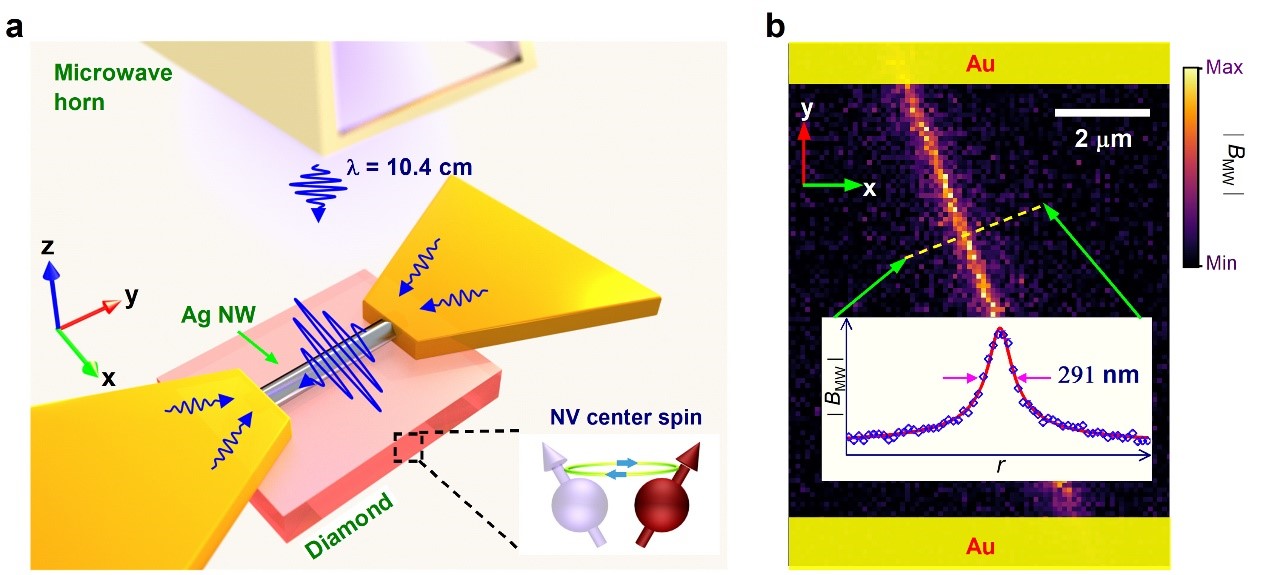Researchers Realize Deep Subwavelength Electromagnetic Fields Localization and Detection
The research team led by Prof. SUN Fangwen from the University of Science and Technology of China (USTC) of the Chinese Academy of Sciences (CAS) experimentally localized the electromagnetic field down to a scale of 10-6λ, and increased the field intensity and the strength of the interaction with the matter by 2.0×108 and 1.4×104 times respectively. This work was published in Nature Communications.
Generally, electromagnetic field can be focused at the scale of its wavelength. However, to pursue a strong interaction with matter, nanoscience researches on the manipulation of the electromagnetic field in a subwavelength space are needed. Though the use of evanescent field coupling makes it possible to achieve sub-wavelength scale electromagnetic field localization, the inefficient detection of electromagnetic fields and low spatial resolution restrict its application.
In order to realize high spatial resolution of electromagnetic field localization, Prof. SUN’s team has proposed an ultra-low pump power charge state depletion (CSD) nanoscopy by which they achieved quantum imaging with 14 nm spatial resolution (Phys. Rev. Appl.).
In this work, researchers experimentally detected the spin transition of electrons with different axial nitrogen-vacancy (NV) color centers with external magnetic field near the nanowire. The experimental results showed that the microwave field could be localized down to 291 nm, corresponding to a scale of 10-6λ.
They then measured the intensity and vector information of the nano-scale-localized electromagnetic field, and found that the deep subwavelength localization came from the near-field radiation of the movement of electrons in one dimensional nano-conductive material, rather than the evanescent field of electromagnetic waves.
Based on the experimental results, researchers designed a nanowire-bowtie hybrid antenna consisting of an Argentum (Ag) nanowire with a 120 nm diameter and a metallic bowtie structure. This antenna could be used to collect, localize and enhance the interaction with electron spin in free space microwave fields. The measurement results of Rabi oscillations showed that the antenna enhanced that local microwave intensity by 2.0×108 times and increased the strength of the interaction with the matter by 1.4×104 times. Utilizing the polarization dependence of the antenna, researchers also verified that the antenna could be used for qubit manipulation with high spatial resolution.

Free space microwave focused to the nanoscale. (Image by CHEN Xiangdong et al.)
This work realized high-spatial-resolution quantum sensing in nanoscience field, and provides an effective tool for exploring the interaction between electromagnetic fields and matter at the nanometer scale. The high concentration of microwave field will promote the far-field qubit manipulation, the measurement of extremely weak electromagnetic signals and other technologies.
Paper link: https://www.nature.com/articles/s41467-021-26662-5
(Edited by HOU Luyao, USTC News Center)
Back
